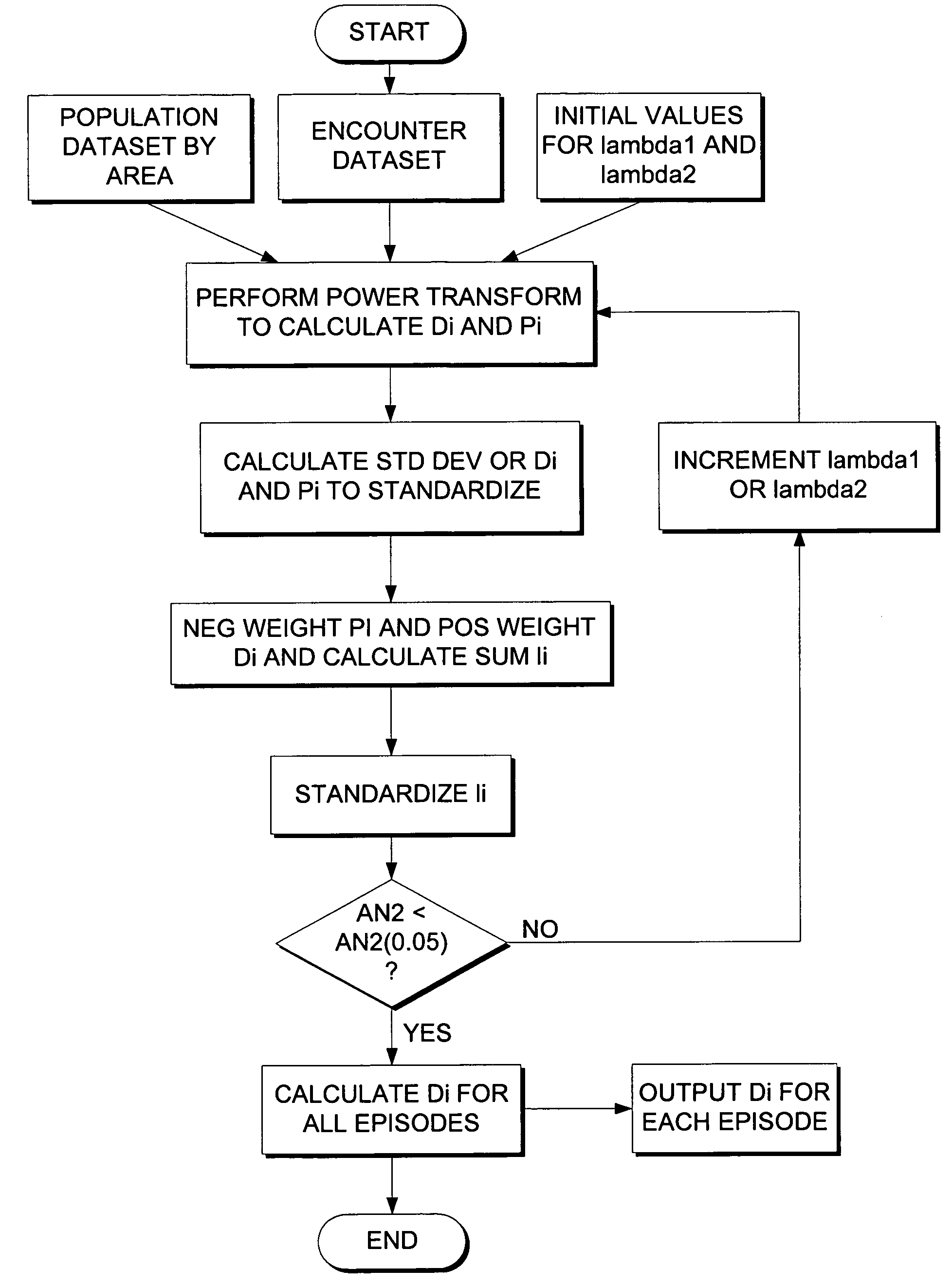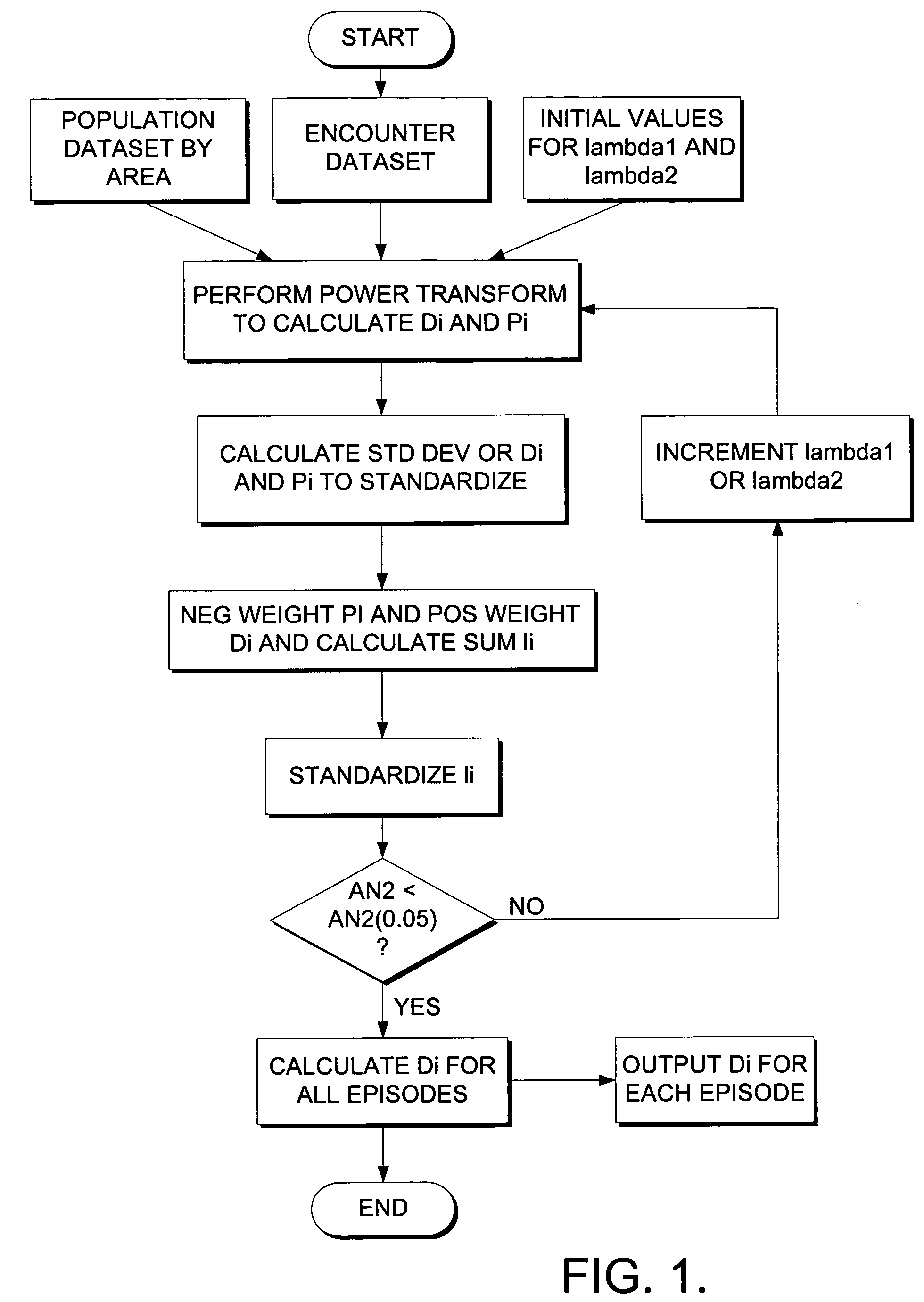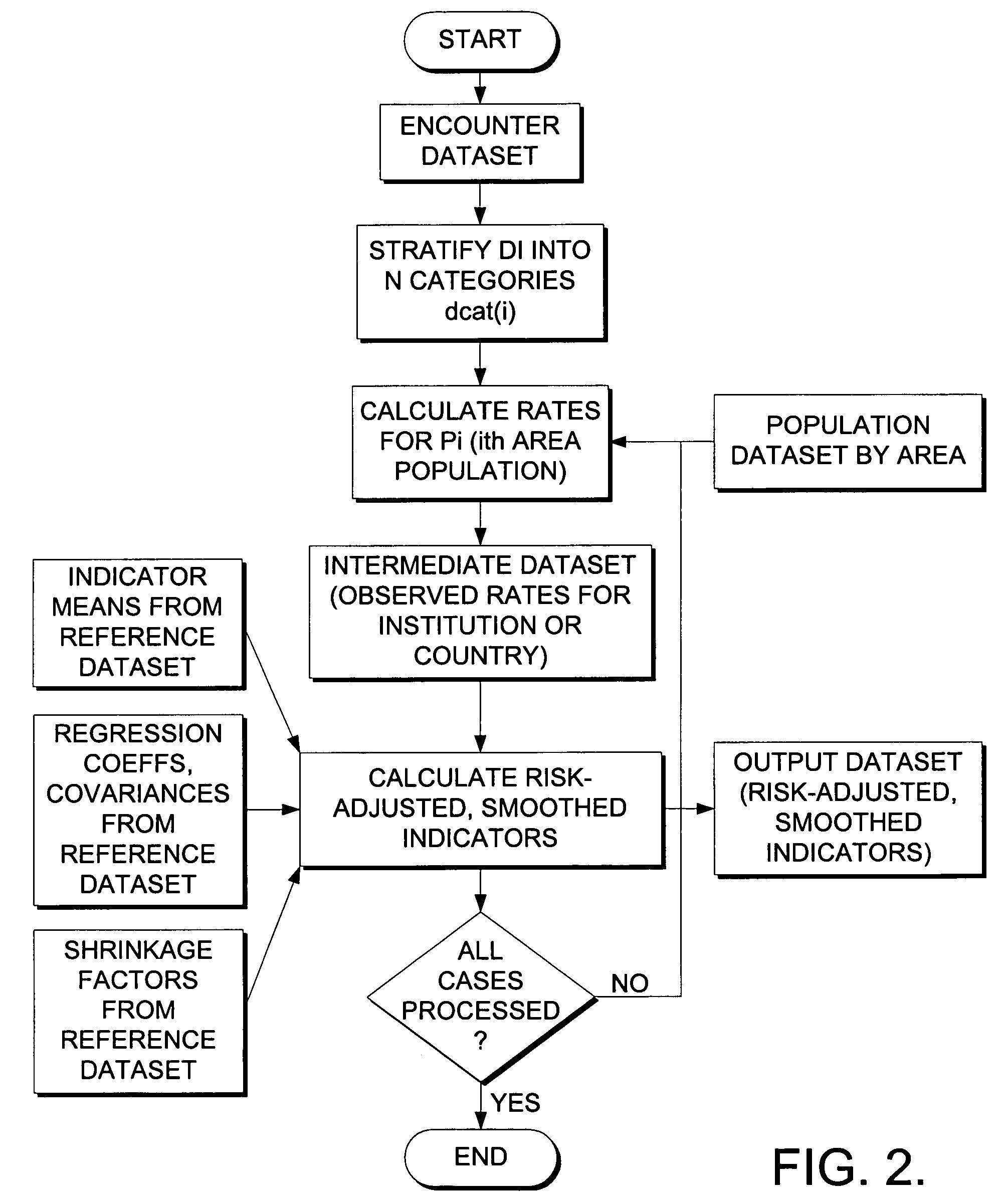System and method for risk-adjusting indicators of access and utilization based on metrics of distance and time
a technology of distance and time and risk adjustment, applied in the field of system and method of risk adjustment indicators of access and utilization of health care services, can solve the problems of life-threatening condition, perforated appendix, poor survival or quality of life of patients with newly diagnosed cancer, etc., to improve the accuracy of estimated moments, simplify the complexity of estimation, and reduce the effect of precision
- Summary
- Abstract
- Description
- Claims
- Application Information
AI Technical Summary
Benefits of technology
Problems solved by technology
Method used
Image
Examples
Embodiment Construction
[0083]Referring now to FIG. 1, a diagram is shown of the elements comprising the method and system for generating the locally normed distance index and verifying and validating whether such an index achieves adequate goodness of fit in the intended geographic region of deployment, sufficient for satisfactory performance in the use for risk-adjusting indicators of access to and utilization of health services.
[0084]Referring now to FIG. 2, a diagram is shown of the elements comprising the method and system for applying the locally normed distance index, stratified into a finite number of categories, to risk-adjust the incidence rates for access-related utilization indicators. The data element HOSPSTCO provides flexibility to calculate the indicators by hospital location or by patient residence. If the user wants to calculate the indicators using the population associated with the hospital location as the denominator, the values for this variable should be the individual hospital FIPS ...
PUM
 Login to View More
Login to View More Abstract
Description
Claims
Application Information
 Login to View More
Login to View More - R&D
- Intellectual Property
- Life Sciences
- Materials
- Tech Scout
- Unparalleled Data Quality
- Higher Quality Content
- 60% Fewer Hallucinations
Browse by: Latest US Patents, China's latest patents, Technical Efficacy Thesaurus, Application Domain, Technology Topic, Popular Technical Reports.
© 2025 PatSnap. All rights reserved.Legal|Privacy policy|Modern Slavery Act Transparency Statement|Sitemap|About US| Contact US: help@patsnap.com



